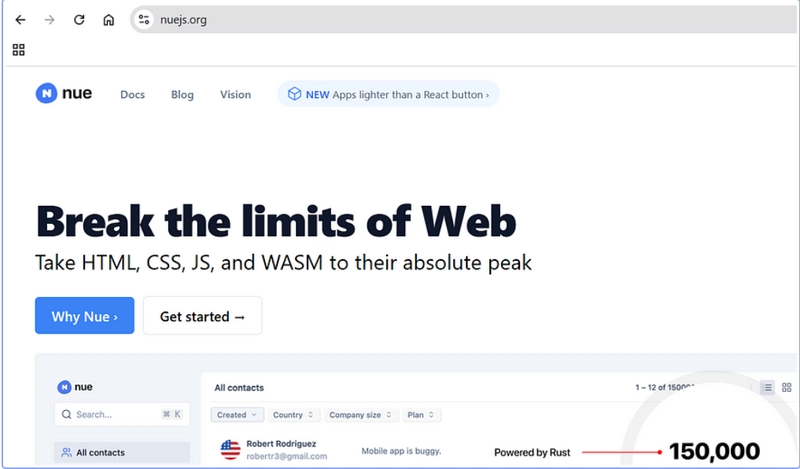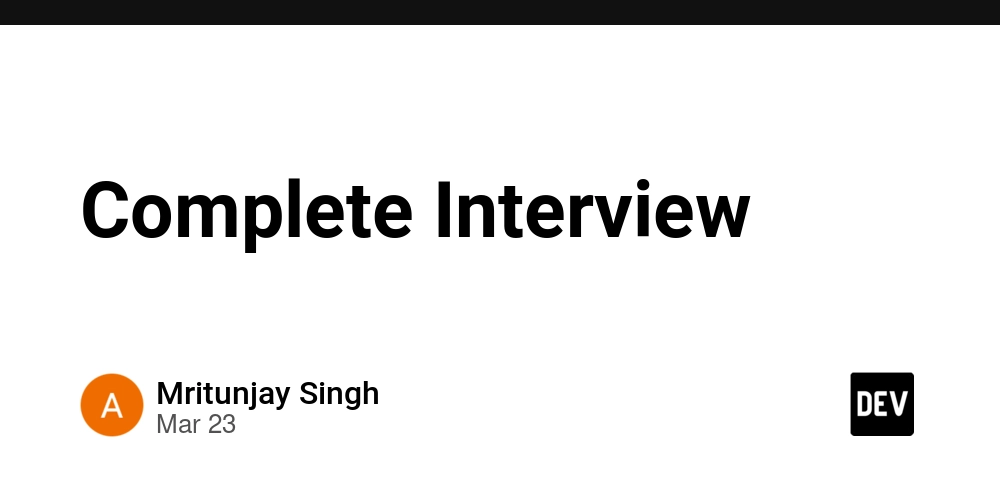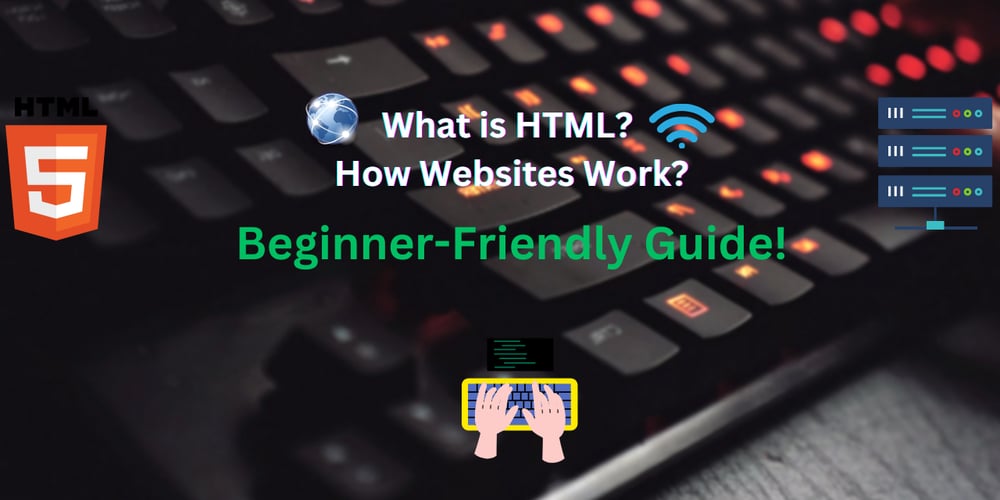Open Source Monetization: Challenges, Strategies, and Future Trends
Abstract This post explores the evolution of open source monetization, blending historical context, licensing models, and technological innovations such as blockchain and NFT incentives. We delve into key concepts like dual licensing, crowdfunding, and tokenization while addressing challenges such as regulatory hurdles, maintainer burnout, and corporate reluctance. With practical examples and case studies from enterprise software to experimental blockchain projects, this guide offers a technical yet accessible roadmap for developers, financial planners, and business leaders to create sustainable open source funding models. Introduction Open source software has revolutionized the technology landscape by fostering collaboration and freedom in software development. However, sustaining an open source project financially remains a significant challenge. With the growing intersection of blockchain technology, NFTs, and innovative licensing strategies, new monetization avenues are emerging. This post examines open source monetization by blending historical background, core licensing concepts, practical use cases, and future trends. It provides valuable insights for developers, business executives, and tech enthusiasts interested in transforming open source passion into sustainable revenue. In this post, we incorporate insights from the original article Open Source Monetization: Challenges and Strategies and additional resources such as the Copyleft Licenses Ultimate Guide and discussions on Firefox Data Sharing & Privacy. We will also explore case studies including NFT collections like the Zora NFT Collection – Zora Team and Upland NFT Collection – Upland Team. Furthermore, we highlight innovative blockchain projects such as License Token Enhancing Open Source Project Visibility. Background and Context Open source originated as an academic and research-driven community sharing code freely to enhance innovation. Over the years the movement expanded from just free software to include core values like transparency, inclusivity, and community governance. Today, both permissive licenses (e.g., MIT, Apache) and copyleft licenses (e.g., GNU GPL) play a central role in directing the distribution and financial prospects of open source projects. Historically, software was shared among enthusiasts and researchers, giving rise to robust projects like Linux, Mozilla, and Apache. These early projects laid the foundation for the free software movement, which later evolved into the broader open source community. Developers, corporations, and nonprofits now converge around platforms that claim both technological excellence and a commitment to shared innovation. This ecosystem is now challenged to balance accessibility with financial viability. In recent years, the infusion of blockchain technology and NFT incentives has generated novel revenue and accountability models. By using smart contracts and tokenization, projects can reward contributor efforts transparently and incentivize ongoing development. Additionally, regulatory and privacy concerns, discussed in resources such as Firefox Data Sharing & Privacy, have added layers of complexity that developers must navigate. Core Concepts and Features Open source monetization relies on a mix of licensing models, revenue streams, and innovative technologies. The following sections detail these core ideas: Open Source Licensing Models The choice of license critically influences how a project can evolve financially. There are two major categories: Permissive Licenses (MIT, Apache): Allow broad reuse and quick adoption, benefiting the community but offering fewer built-in revenue streams. Copyleft Licenses (GNU GPL): Require that derivative works also maintain open access, supporting community collaboration while complicating monetization. For more detailed insights on licensing choices, refer to the Copyleft Licenses Ultimate Guide. Dual Licensing and Hybrid Models Dual licensing offers a powerful strategy where a project is distributed under both an open source license and a proprietary license. This model allows community users free access while commercial users can pay for additional services like priority support or exclusive features. Enterprises such as Red Hat and WordPress have successfully applied this model, creating a win-win scenario that balances innovation with revenue. Crowdfunding and Corporate Sponsorship To bridge the revenue gap in free software, many projects turn to community donations through platforms like GitHub Sponsors or Patreon. Corporate sponsorships further provide steady income by offering benefits such as enhanced service levels or brand association. The funding mixture often includes: Crowdfunding: Emphasizes small contributions from a wide community, making it flexible and community-driven. Corporate Sponsorships: Offers large-scale, stable funding to en

Abstract
This post explores the evolution of open source monetization, blending historical context, licensing models, and technological innovations such as blockchain and NFT incentives. We delve into key concepts like dual licensing, crowdfunding, and tokenization while addressing challenges such as regulatory hurdles, maintainer burnout, and corporate reluctance. With practical examples and case studies from enterprise software to experimental blockchain projects, this guide offers a technical yet accessible roadmap for developers, financial planners, and business leaders to create sustainable open source funding models.
Introduction
Open source software has revolutionized the technology landscape by fostering collaboration and freedom in software development. However, sustaining an open source project financially remains a significant challenge. With the growing intersection of blockchain technology, NFTs, and innovative licensing strategies, new monetization avenues are emerging. This post examines open source monetization by blending historical background, core licensing concepts, practical use cases, and future trends. It provides valuable insights for developers, business executives, and tech enthusiasts interested in transforming open source passion into sustainable revenue.
In this post, we incorporate insights from the original article Open Source Monetization: Challenges and Strategies and additional resources such as the Copyleft Licenses Ultimate Guide and discussions on Firefox Data Sharing & Privacy. We will also explore case studies including NFT collections like the Zora NFT Collection – Zora Team and Upland NFT Collection – Upland Team. Furthermore, we highlight innovative blockchain projects such as License Token Enhancing Open Source Project Visibility.
Background and Context
Open source originated as an academic and research-driven community sharing code freely to enhance innovation. Over the years the movement expanded from just free software to include core values like transparency, inclusivity, and community governance. Today, both permissive licenses (e.g., MIT, Apache) and copyleft licenses (e.g., GNU GPL) play a central role in directing the distribution and financial prospects of open source projects.
Historically, software was shared among enthusiasts and researchers, giving rise to robust projects like Linux, Mozilla, and Apache. These early projects laid the foundation for the free software movement, which later evolved into the broader open source community. Developers, corporations, and nonprofits now converge around platforms that claim both technological excellence and a commitment to shared innovation. This ecosystem is now challenged to balance accessibility with financial viability.
In recent years, the infusion of blockchain technology and NFT incentives has generated novel revenue and accountability models. By using smart contracts and tokenization, projects can reward contributor efforts transparently and incentivize ongoing development. Additionally, regulatory and privacy concerns, discussed in resources such as Firefox Data Sharing & Privacy, have added layers of complexity that developers must navigate.
Core Concepts and Features
Open source monetization relies on a mix of licensing models, revenue streams, and innovative technologies. The following sections detail these core ideas:
Open Source Licensing Models
The choice of license critically influences how a project can evolve financially. There are two major categories:
- Permissive Licenses (MIT, Apache): Allow broad reuse and quick adoption, benefiting the community but offering fewer built-in revenue streams.
- Copyleft Licenses (GNU GPL): Require that derivative works also maintain open access, supporting community collaboration while complicating monetization.
For more detailed insights on licensing choices, refer to the Copyleft Licenses Ultimate Guide.
Dual Licensing and Hybrid Models
Dual licensing offers a powerful strategy where a project is distributed under both an open source license and a proprietary license. This model allows community users free access while commercial users can pay for additional services like priority support or exclusive features. Enterprises such as Red Hat and WordPress have successfully applied this model, creating a win-win scenario that balances innovation with revenue.
Crowdfunding and Corporate Sponsorship
To bridge the revenue gap in free software, many projects turn to community donations through platforms like GitHub Sponsors or Patreon. Corporate sponsorships further provide steady income by offering benefits such as enhanced service levels or brand association. The funding mixture often includes:
- Crowdfunding: Emphasizes small contributions from a wide community, making it flexible and community-driven.
- Corporate Sponsorships: Offers large-scale, stable funding to ensure long-term sustainability.
Premium Features and Support Services
Projects often maintain a free core software while monetizing through premium add-ons. These can include dedicated support, customizable integrations, and advanced features. This strategy helps enterprises bypass the limitations of a purely donation-based model and ensures quality service for business-critical applications.
Blockchain Integration and Tokenization
Blockchain opens up new ways to reward developers transparently. By tokenizing contributions using smart contracts, projects create a decentralized reward system that can be monitored by everyone. Key advantages include:
- Transparency: All transactions are recorded on an immutable ledger, ensuring credibility.
- Decentralization: Reduces dependency on traditional funding while engaging a global user base.
- Interoperability: Tokens can serve as both digital rewards and as currency in NFT-driven marketplaces.
NFT Incentive Models
NFTs (Non-Fungible Tokens) serve as unique digital collectibles that can reward contributions, foster community loyalty, and even appreciate in value over time. Case studies such as the Zora NFT Collection – Zora Team and Upland NFT Collection – Upland Team illustrate how NFTs can integrate with open source projects to enhance both community engagement and revenue potential.
Legal Frameworks and Compliance
Ensuring that a project complies with intellectual property laws and international regulations is crucial. Constant updates in legal frameworks demand clear contributor agreements and robust licensing strategies, particularly when integrating novel funding methods like tokenized licenses. Resources such as discussions on licensing challenges, for instance The Downside of Apache License and Why I Never Would Use It, illustrate that legal clarity is key to sustainable monetization.
Below is a summary table outlining the key features:
| Feature | Description | Key Benefit |
|---|---|---|
| Licensing Models | Permissive vs. copyleft approaches | Balances adoption with monetization options |
| Dual Licensing | Free open source + proprietary variants | Generates revenue without hampering openness |
| Crowdfunding & Sponsorship | Donations and corporate support | Provides a steady income stream |
| Premium Services | Advanced tools, custom integrations, technical support | Meets enterprise needs while keeping software free |
| Blockchain & Tokenization | Decentralized digital rewards using smart contracts | Enhances transparency and global participation |
| NFT Incentives | Unique digital assets tied to community contributions | Fosters engagement and potential asset appreciation |
| Legal Compliance | Adapting to evolving regulatory frameworks | Protects intellectual property and revenue streams |
Additional Technical Details
Some notable keywords for SEO include “open source monetization,” “blockchain integration,” “NFT incentive models,” “dual licensing,” “open source funding,” and “corporate sponsorship.” Integrating these naturally helps technical crawlers recognize the subject matter without overwhelming the reader.
Applications and Use Cases
To illustrate these concepts, consider the following practical examples:
Enterprise Open Source Software
Companies like Red Hat have leveraged open source by offering dual licensing and premium customer support. By providing a free Linux base and charging for enterprise-level services, they created a sustainable revenue model without compromising on community benefits. WordPress also follows a freemium model: the core product is free, while premium themes, plugins, and hosting services are monetized.
Blockchain-Driven Tokenization
Projects have begun to integrate blockchain into funding structures. For instance, platforms similar to License Token Enhancing Open Source Project Visibility utilize tokenization to reward developer contributions automatically. In these systems, every code commit or documentation update can generate digital tokens that are securely recorded on the blockchain and later exchanged for services or value.
Crowdfunding and Hybrid Models
Smaller projects often harness the power of crowdfunding to secure initial funding. Platforms like GitHub Sponsors empower community members to support development, while corporate partnerships provide larger funding injections. A hybrid model combining micro-donations with large corporate backing has proven effective, allowing for both incremental improvements and strategic upgrades.
Key Applications are summarized below:
- Enterprise Solutions: Dual licensing and premium support models drive revenue while keeping core software open.
- Blockchain Tokenization: Automated, transparent reward systems for developers maintain integrity and incentivize contributions.
- Crowdfunding and Sponsorship: Small donations combined with corporate backing help sustain long-term projects.
Challenges and Limitations
Despite these innovative models, several challenges complicate open source monetization:
- Lack of Direct Revenue: Free access to source code creates inherent revenue gaps, necessitating alternate funding streams such as corporate sponsorships or premium services.
- Maintainer Burnout: Relying on volunteer contributions without adequate financial support can lead to burnout and stalled development.
- Licensing Complexities: Navigating licensing issues (discussed in The Downside of Apache License and Why I Never Would Use It) can lead to legal ambiguities affecting both adoption rates and revenue potential.
- Regulatory and Compliance Barriers: Emerging technologies like blockchain require adherence to evolving data privacy and cybersecurity regulations, further complicating monetization efforts.
- Market Competition: Open source projects face stiff competition from purely free alternatives, challenging developers to constantly improve and justify premium features.
These hurdles require that developers continuously innovate and adjust their funding strategies to maintain both community trust and financial stability.
Future Outlook and Innovations
The future of open source monetization appears promising as technological trends continue to evolve. Here are some emerging trends:
- Advanced Blockchain Integration: As blockchain networks mature and improve interoperability, tokenization will become a mainstream funding mechanism. Smart contracts may soon streamline funding allocations and reward contributions with unparalleled transparency.
- Expansion of NFT Incentives: The success of NFT-driven projects like those featured by the Zora NFT Collection – Zora Team indicates a growing trend; more projects may incorporate unique digital collectibles to foster brand loyalty and drive engagement.
- Enhanced Community Engagement and AI: Artificial intelligence is likely to play a role in predicting funding trends and automating donor recognition, thus optimizing resource allocation and improving revenue forecasting.
- Regulatory Stability: As governments and tech communities converge on best practices regarding data privacy and decentralized finance, improved regulatory clarity will encourage wider corporate investment in open source projects.
- Hybrid Funding Models: Future models may blend crowdfunding, tokenization, premium support, and corporate sponsorship even more seamlessly, ensuring robust and sustainable open source ecosystems.
Summary
Open source monetization is undergoing a transformative evolution driven by new technologies and innovative funding models. Through dual licensing, premium enhancement, blockchain-based tokenization, and NFT incentives, developers are finding ways to sustain open source projects without compromising their core values. While challenges related to regulatory issues, maintainer burnout, and market competition persist, the future remains bright as the technology and legal frameworks mature.
In summary, this post has provided a comprehensive exploration of the evolution, core concepts, practical applications, and future trends in open source monetization. For further reading on sustainable innovation in open source, check out the Exploring IBM Public License 1.0 RV: A Balanced Approach to Open Source Licensing and Open Source Funding Success Stories: A Path to Sustainable Innovation. Also, learn about enhancing community visibility through modern technologies in Enhancing Open Source Visibility with License Token.
By embracing these innovations and proactively addressing challenges, the open source community can ensure that creative development and sustainable funding go hand in hand.
References and Further Reading
- Copyleft Licenses Ultimate Guide
- Firefox Data Sharing & Privacy
- Zora NFT Collection – Zora Team
- Upland NFT Collection – Upland Team
- License Token Enhancing Open Source Project Visibility
Additional readings from Dev.to:
- Exploring IBM Public License 1.0 RV: A Balanced Approach to Open Source Licensing
- Open Source Funding Success Stories: A Path to Sustainable Innovation
- Enhancing Open Source Visibility with License Token
Embracing a multi-dimensional approach to funding, open source projects can continue to innovate, engage communities, and drive technological progress.











































































































































































![[The AI Show Episode 142]: ChatGPT’s New Image Generator, Studio Ghibli Craze and Backlash, Gemini 2.5, OpenAI Academy, 4o Updates, Vibe Marketing & xAI Acquires X](https://www.marketingaiinstitute.com/hubfs/ep%20142%20cover.png)




























































































































![[DEALS] The Premium Learn to Code Certification Bundle (97% off) & Other Deals Up To 98% Off – Offers End Soon!](https://www.javacodegeeks.com/wp-content/uploads/2012/12/jcg-logo.jpg)


![From drop-out to software architect with Jason Lengstorf [Podcast #167]](https://cdn.hashnode.com/res/hashnode/image/upload/v1743796461357/f3d19cd7-e6f5-4d7c-8bfc-eb974bc8da68.png?#)








































































































.png?#)


































_Christophe_Coat_Alamy.jpg?#)
.webp?#)
 (1).webp?#)






































































































![Apple Considers Delaying Smart Home Hub Until 2026 [Gurman]](https://www.iclarified.com/images/news/96946/96946/96946-640.jpg)
![iPhone 17 Pro Won't Feature Two-Toned Back [Gurman]](https://www.iclarified.com/images/news/96944/96944/96944-640.jpg)
![Tariffs Threaten Apple's $999 iPhone Price Point in the U.S. [Gurman]](https://www.iclarified.com/images/news/96943/96943/96943-640.jpg)

































































































































